3 Min Read

Bow view of fully loaded cargo ship.Stewart Sutton/ThinkstockPhotos
As trade skirmishes between the U.S. and China continue to heat up, U.S. soybean export inspections last week haven’t yet reached a dire situation – exceeding trade expectations and landing ahead of the same week a year ago. Corn and wheat numbers also put up moderately strong numbers for the week ending June 14.
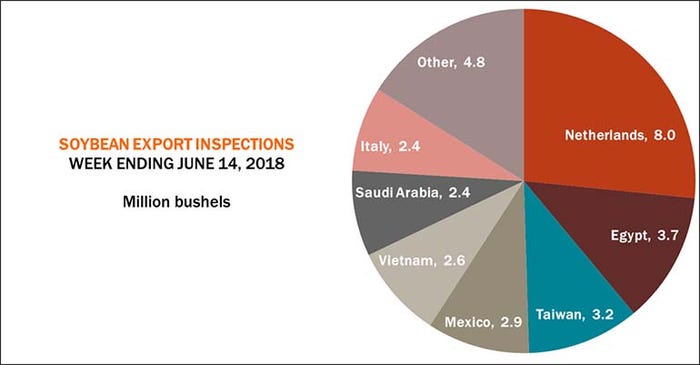
Soybean export inspections last week reached 30.1 million bushels, ticking moderately higher than the prior week’s tally of 24.8 million bushels and besting trade expectations, which ranged between 12 million and 23 million bushels. Weekly sales form a year ago were only 10.7 million bushels, and the weekly rate needed to reach USDA’s forecasts remain at a manageable 24.1 million bushels. Cumulative volume for the 2017/18 marketing year still lags 7% behind a year ago, however, with 1.775 billion bushels.
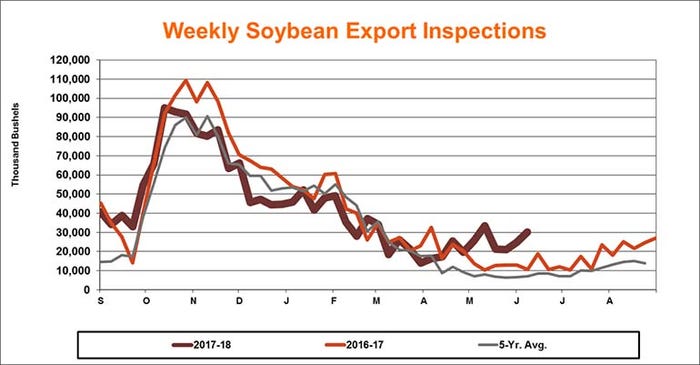
China was noticeably absent for top soybean destinations last week, but other countries helped fill that void. The Netherlands was the No. 1 destination, with 8.0 million bushels, followed by Egypt (3.7 million bushels), Taiwan (3.2 million bushels), Mexico (2.9 million bushels), Vietnam (2.6 million bushels), Saudi Arabia (2.4 million bushels) and Italy (2.4 million bushels).
“This week’s report shows what a world without China looks like to soybeans,” says Farm Futures senior grain market analyst Bryce Knorr. “It’s not bad right now as end users took delivery on previous purchases, eager to secure supplies in case China vacuums up supplies out of Brazil this summer.”
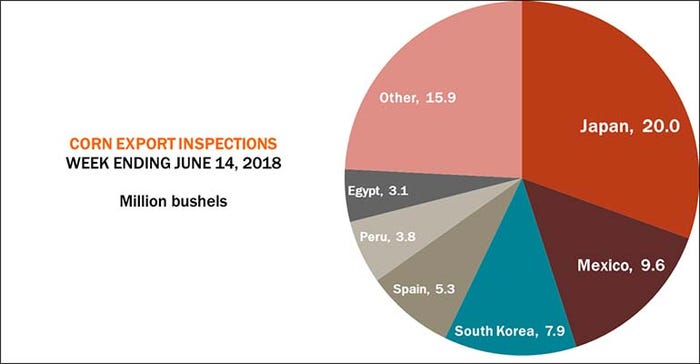
Corn export inspections also exceeded trade estimates that ranged between 43 million and 63 million bushels last week, reaching 65.7 million bushels. That total also bested the prior week’s total of 55.5 million bushels and pushed the weekly rate needed to reach USDA forecasts down to 48.1 million bushels. Cumulative volume for the 2017/18 marketing year remains 8.5% below the pace of 2016/17, with 1.679 billion bushels.
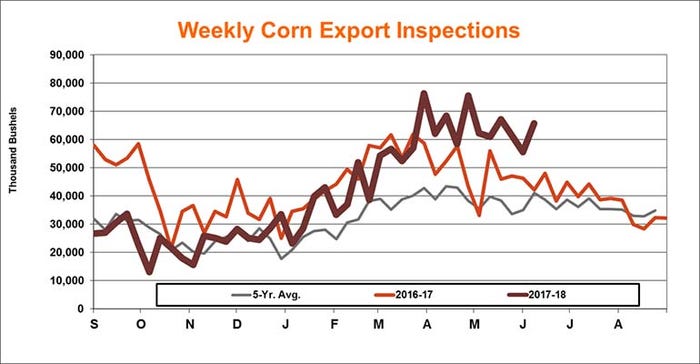
Japan was the runaway top destination for U.S. corn export inspections last week, with 20.0 million bushels. Other top destinations included Mexico (9.6 million bushels), South Korea (7.9 million bushels), Spain (5.3 million bushels), Peru (3.8 million bushels) and Egypt (3.1 million bushels).
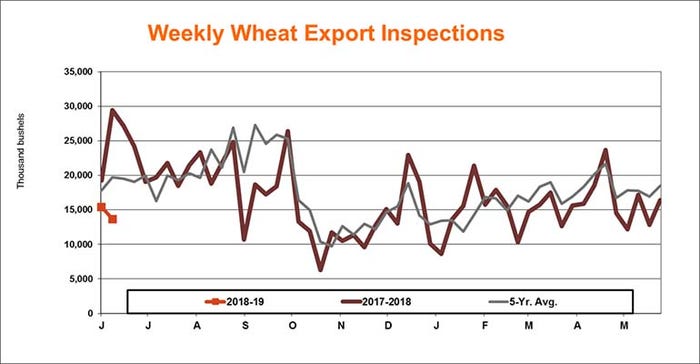
Wheat export inspections last week reached 13.7 million bushels – below the prior week’s tally of 15.4 million bushels but splitting the average trade guess that ranged between 11 million and 18 million bushels. The weekly rate needed to reach USDA forecasts inches higher, to 18.1 million bushels. The same week last year reached 27.2 million bushels, and the young 2018/19 marketing year finds itself already behind the prior year, with 29 million bushels vs. 60 million bushels to start the 2017/18 marketing year.

Three countries in Southeast Asia – the Philippines, Indonesia and Thailand – share the top spot for U.S. wheat export inspections last week, with 2.0 million bushels each. Other top destinations included Japan (1.9 million bushels), South Korea (1.9 million bushels), Nigeria (1.2 million bushels) and Ecuador (1.0 million bushels).
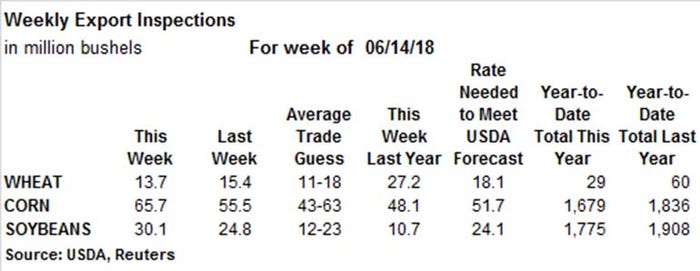
About the Author(s)
Subscribe to receive top agriculture news
Be informed daily with these free e-newsletters
You May Also Like






